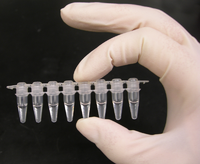
Photo from wikipedia
There is an increased use of immunochromatographic test strips to presumptively identify bodily fluids of forensic interest, such as blood, semen, and saliva. Commonly, forensic samples are of low quantities.… Click to show full abstract
There is an increased use of immunochromatographic test strips to presumptively identify bodily fluids of forensic interest, such as blood, semen, and saliva. Commonly, forensic samples are of low quantities. In the practice of conserving limited samples, it would be ideal to be able to recover the genetic material deposited on these testing membranes. This research aimed to determine whether DNA could be extracted from semen and saliva test strips, which part of the test strip is best to use, and to assess the quality of the DNA recovered. Semen and saliva samples were deposited on SERATEC® PSA Semiquant and Amylase Tests and analyzed. The testing membrane was then removed from the cassette and DNA extraction methods (forensicGEM Universal, forensicGEM Sperm, QIAamp® DNA Mini kit, Monarch® Nucleic Acid Purification kit, and organic extraction) were performed. Quality was evaluated by qPCR and STR analysis. DNA from semen was best extracted using the Monarch® Nucleic Acid Purification kit, while saliva was best extracted using the forensicGEM or QIAamp kits. No significant differences were observed between collection of the sample well pad and testing strip, thus use of the entire strip is encouraged. DNA from semen and saliva was quantifiable with a 1:1000 dilution. DNA quality analysis by qPCR showed that there is no difference in the DNA quality following elution from the test strip. However, degradation was noted in saliva samples and some semen samples by STR analysis. Scientists are encouraged to consider processed test strips for DNA profiling to preserve evidence.
Journal Title: Journal of Forensic Sciences
Year Published: 2022
Link to full text (if available)
Share on Social Media: Sign Up to like & get
recommendations!